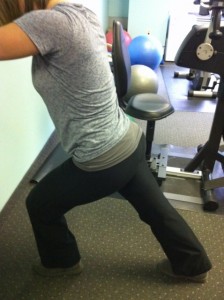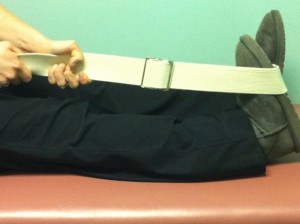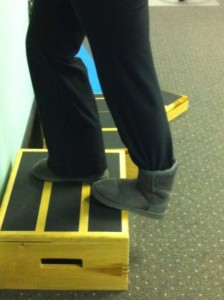Muscle cramps can occur from overexertion, dehydration, an electrolyte imbalance, and inactivity. During a muscle cramp, the muscle shortens causing sudden severe pain. Muscle cramps can develop from pointing your toes in bed. Also, it is common in women who are pregnant.
If you experience a muscle cramp in your calf, try to walk it off. If that does not work, massage and apply heat to your calf. Then, stretch the calf to loosen the muscle and prevent further muscle cramping.
Calf Stretches
- Runner’s Stretch– Stand with your hands against the wall, with your feet staggered, lunge towards the wall. The calf you are trying to stretch should be in the back.
- Calf Stretch with Strap– sit with your legs in front of you and pull your toes toward your knee.
- Calf Stretch on Step– Stand on a step, lower the heel of the cramping leg to get a stretch. Hold onto a railing for support.
If you are prone to calf cramps, you should stretch regularly.




